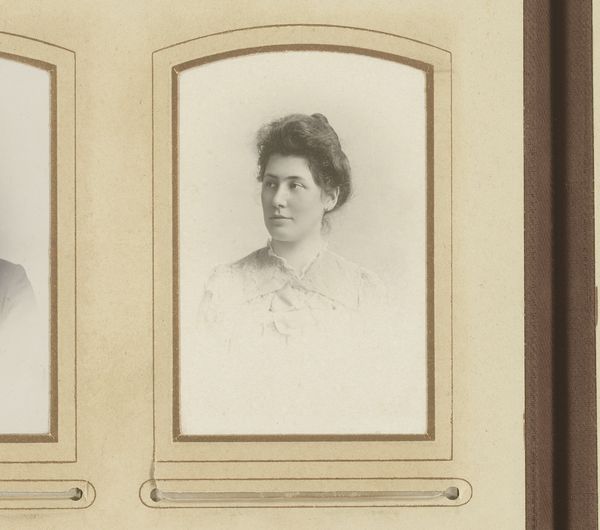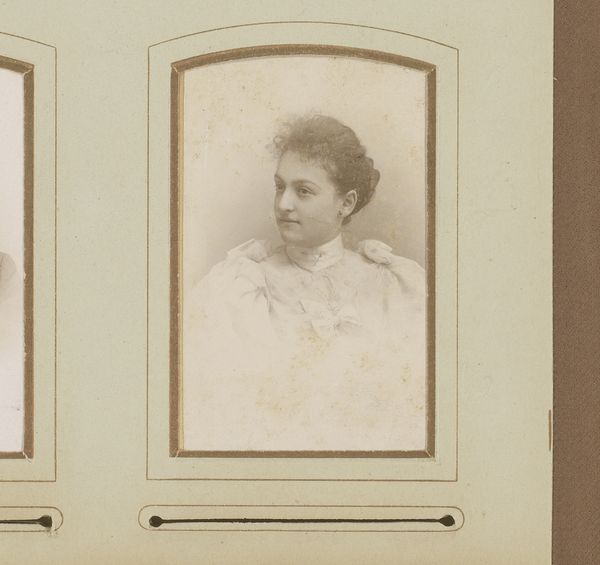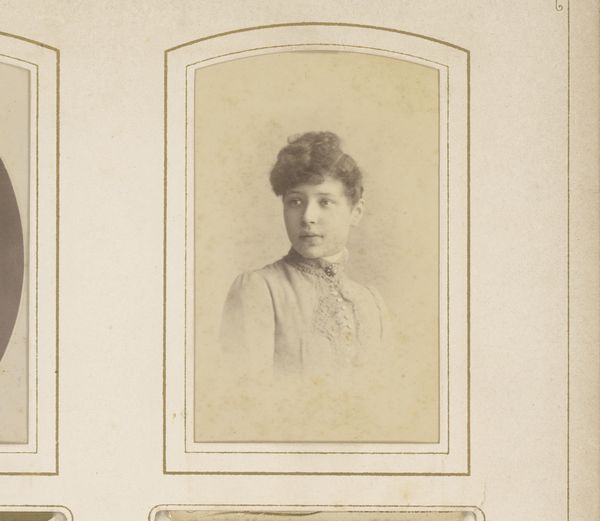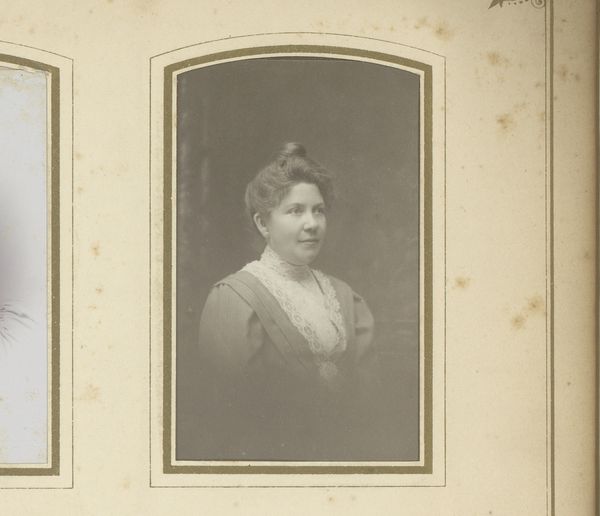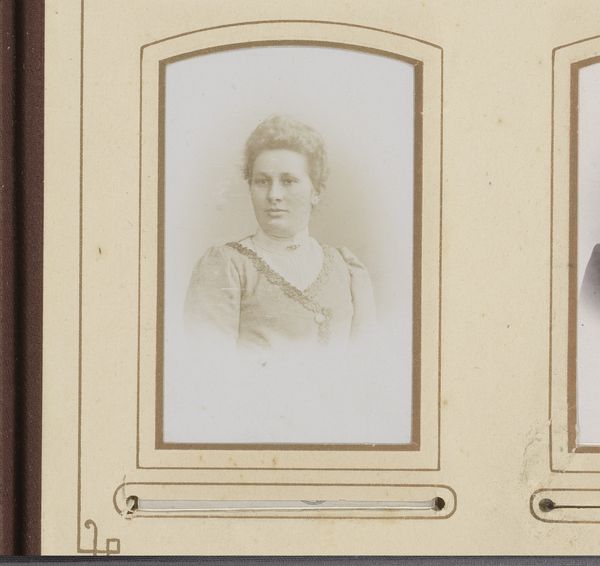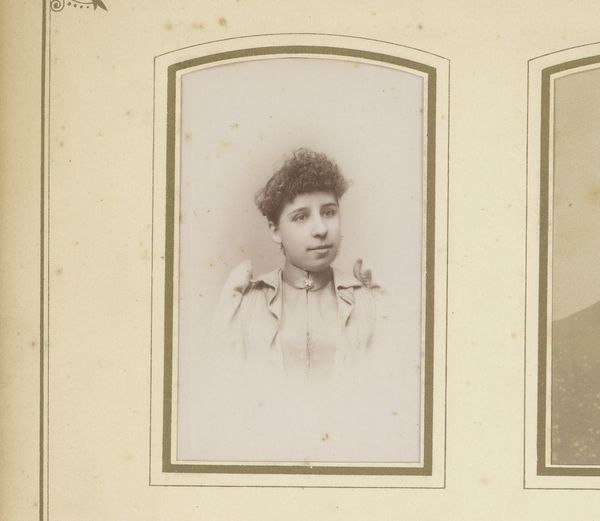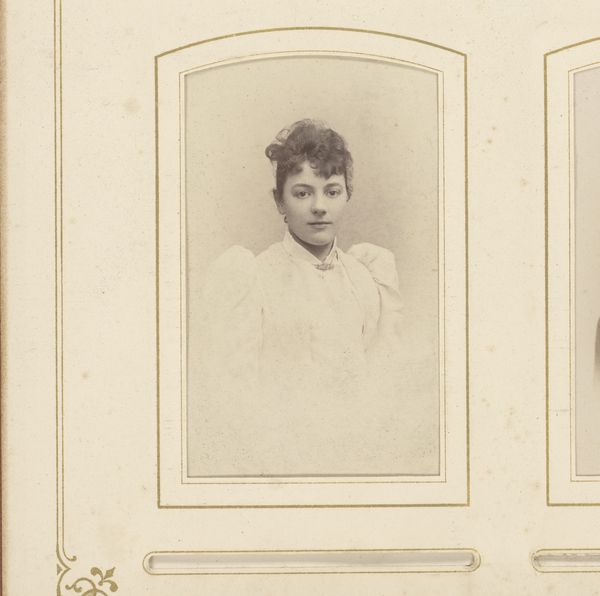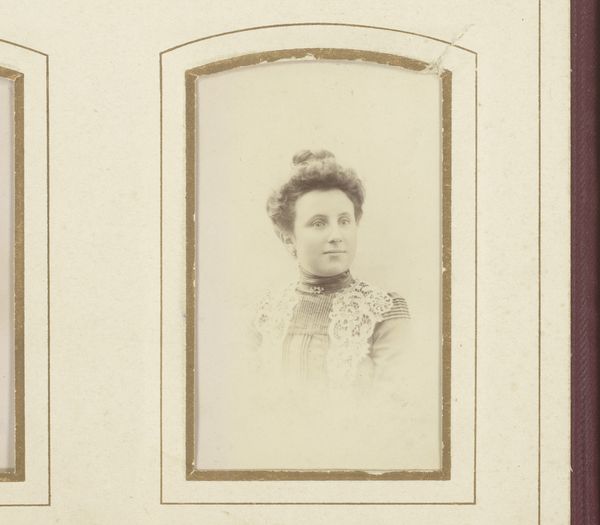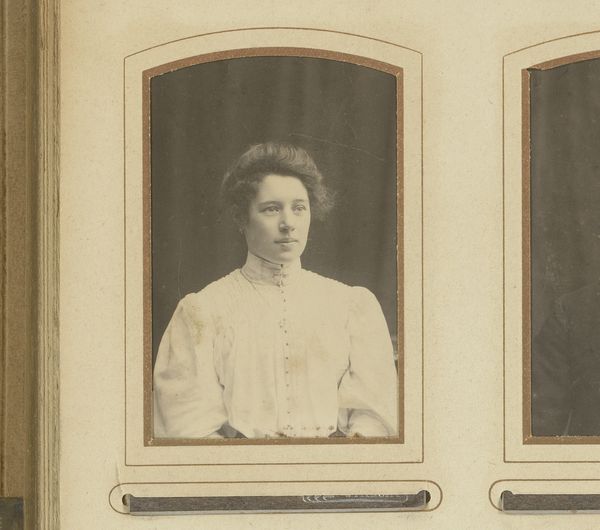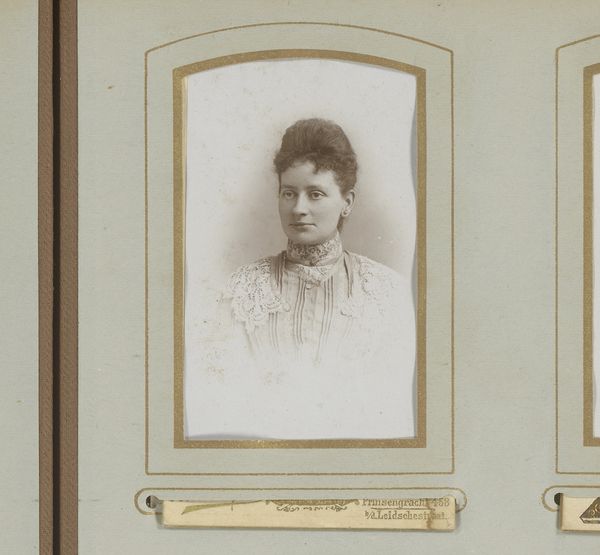
photography
#
portrait
#
photography
#
realism
Dimensions: height 84 mm, width 51 mm
Copyright: Rijks Museum: Open Domain
Editor: Here we have Ernest Bichon’s photograph, "Portret van een jonge vrouw," taken sometime between 1860 and 1900. The sepia tone and formal pose give it such a distinct vintage feel. What draws your attention when you look at this portrait? Curator: It's interesting how photography, initially striving for objective realism, so quickly became laden with the symbolic weight of painted portraiture. The young woman's upward gaze – almost pleading – paired with the lace, a traditional signifier of purity and delicacy, constructs a very specific visual language. Editor: Pleading? I hadn’t thought of it that way. Curator: Well, consider how the photographer directs her attention. The subtle upward tilt could imply a deference to a higher power, societal expectations, or perhaps a hopeful yearning for a brighter future. Photography was often employed to elevate its subject, bestowing dignity. Does the lace suggest aspirations or constraints? Editor: I see what you mean about aspiration. The framing of the portrait within the album page almost gives her the appearance of being set apart. The image certainly conveys her character as part of a greater whole of something meaningful and complete. Curator: Indeed. Bichon isn’t just capturing a likeness, but solidifying an image infused with the hopes, anxieties, and values of an entire era. That lace transforms the whole character, doesn't it? It speaks to social identity far more profoundly than just fashion. Editor: It’s amazing how a single image can hold so many layers of meaning. Curator: It is an excellent lesson on cultural memory. These seemingly simple images, they ripple outwards into the cultural psyche.
Comments
No comments
Be the first to comment and join the conversation on the ultimate creative platform.
